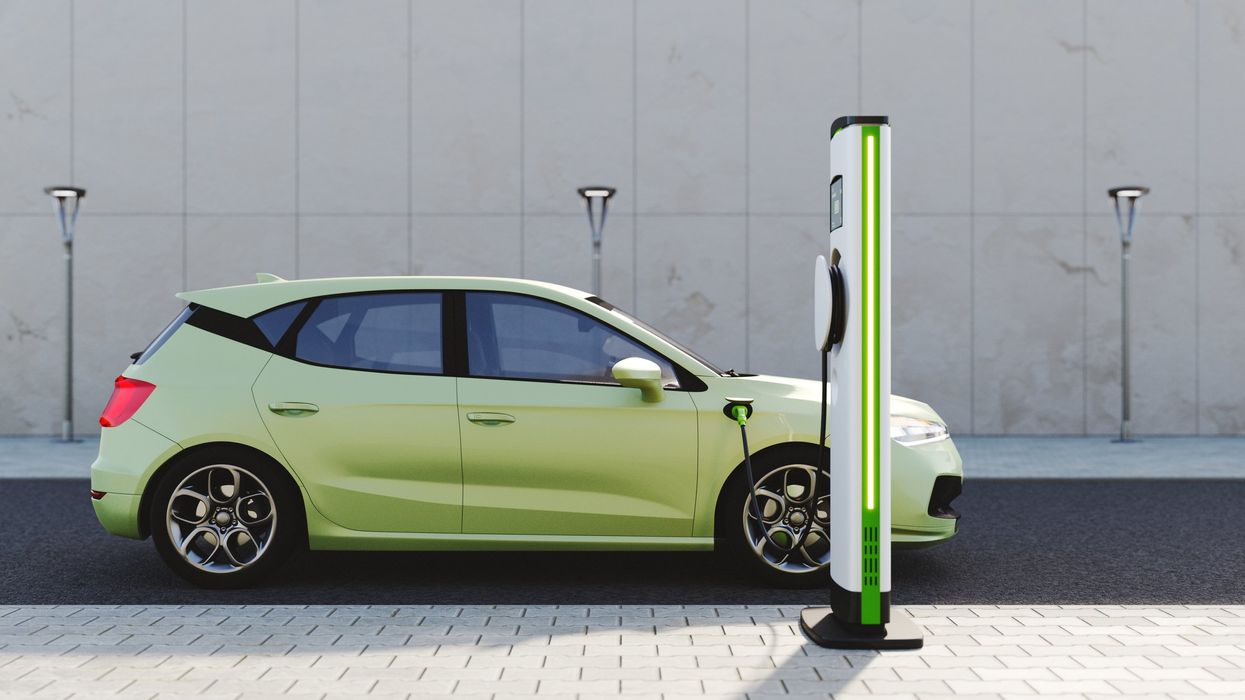
piranka/Getty Images

Politicians who rush to save the world one car at a time imagine a fully electric fleet would impact the climate in a big way. The facts suggest otherwise.
Advocates of a total transition to electric vehicles face a big problem. How can they convince drivers to abandon cheaper, longer-range, more convenient cars powered by internal combustion engines? Not to worry, they insist. The speed bumps slowing EVs' widespread adoption will soon vanish and consumers will happily drive America into an electrically powered transportation future.
That’s highly doubtful.
Here are a few facts. EVs on average cost significantly more than their combustion-engine cousins to build and maintain — roughly $22,000 more. Spurred by federal subsidies, auto manufacturers have produced many more EVs than consumers demand. Unsold inventory has accumulated. General Motors and Ford already have pushed back their internal output targets.
What’s more, Ford hemorrhaged more than $70,000 per EV sale in the second quarter of 2023. Its EV operations are projected to lose $4.5 billion this year. Ford CEO Jim Farley puts the ideal EV price point at $25,000, but the batteries alone cost $18,000. Ford’s electric Mustang Mach-E SUV starts at $44,000, which about $25,000 more than a comparable Edge model.
Even EVs’ limited successes thus far depend heavily on government support. The Inflation Reduction Act allotted an originally estimated $14 billion for clean-vehicle subsidies and $30.6 billion for EV battery manufacturing. Upon further scrutiny, these estimates leaped to $390 billion and $196.5 billion, respectively.
The IRA’s total clean energy spending, once estimated by the Congressional Budget Office to cost $391 billion, will likely drain more than $1 trillion over a decade. Worse, Joe Biden has moved via executive action to limit drastically the number of new gas-powered vehicles marketed by the 2030s.
A new report from the Texas Public Policy Foundation highlights the more opaque and often forgotten subsidization that EVs enjoy. These include Corporate Average Fuel Economy standards, indirect subsidies, and socialized infrastructure costs. Authors Brent Bennett and Jason Isaac’s top-line findings wrinkle the brain. They calculate that “nearly $22 billion in federal and state subsidies and regulatory credits suppressed the retail price of EVs in 2021 by an average of almost $50,000.” These numbers predate the Inflation Reduction Act.
“The largest source of financial support for EVs comes not from direct subsidies but from hidden costs driven by federal regulations,” Bennett and Isaac write. “These regulatory standards are applied on a fleetwide basis and allow for the trading of regulatory credits, the costs of which are passed on to buyers of gasoline and diesel vehicles.” For example, the CAFE credit system netted Tesla $1.78 billion in 2022 alone. The duo estimate that the Environmental Protection Agency’s greenhouse-gas credits could amount to an additional $3,322 per EV.
Moreover, EV owners often enjoy exemptions from various state taxes. “Our preliminary analysis indicates that, on average, these states taxes come out to about 1.7% of the cost of electricity and that EV owners avoid approximately $300 per year in liquid fuel taxes and registration fees, after paying any electricity taxes and EV registration fees,” Bennett and Isaac report. Although libertarians may rightly object to tax hikes, selectively granted tax exemptions nonetheless function as subsidies, sending distorted price signals and interfering with the free market.
Bennett and Isaac also note that EV owners’ unique electricity needs require increased public investment in infrastructure. “These socialized costs add up to $11,883 per EV over 10 years,” they write.
The Biden administration hopes EVs will make up half of new cars sold by 2030. However, even prolific taxpayer subsidies will likely fail to overcome a number of clear barriers. For one, this revolution may face a crippling shortage of battery components, which has opened a fissure between anti-mineral-mining environmentalists and EV advocates.
Toyota says it will take a more balanced approach for now, emphasizing hybrid vehicles as a means to conserve resources. According to the company, the materials consumed by a single EV battery are enough to produce technology for 90 hybrids. “The overall carbon reduction of those 90 hybrids over their lifetimes is 37 times as much as a single battery electric vehicle,” Toyota says.
Politicians who rush to save the world one EV at a time presume a fully electric consumer vehicle fleet would impact the climate significantly. This seems unlikely, however. Personal vehicles worldwide produce just 3% of global emissions. The U.S. has just 12% of the global fleet, writes Holman W. Jenkins Jr. at the Wall Street Journal. Noting that an EV halves the emissions of a gas-powered car, Jenkins calculates that even a maximalist American EV mandate would reduce total emissions by just 0.18%.
Basic economic rules such as supply and demand will ensure Democrats learn that their dreams for a totally electrified America are unlikely to come true according to their timeline. Markets respond poorly to regulatory manhandling, a fact that even the best of intentions cannot alter. In the interim, however, the federal government’s foolish subsidies and emissions mandates can cause havoc in the auto industry.
David B. McGarry